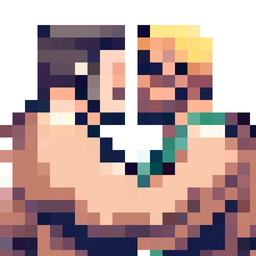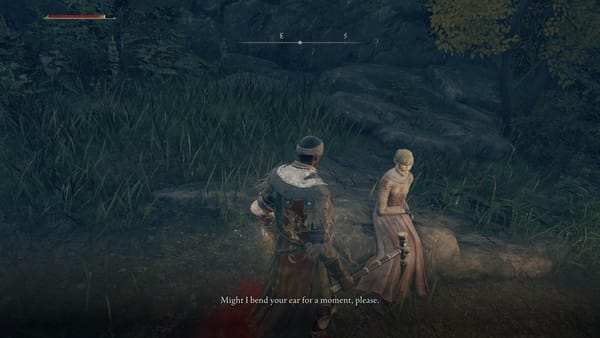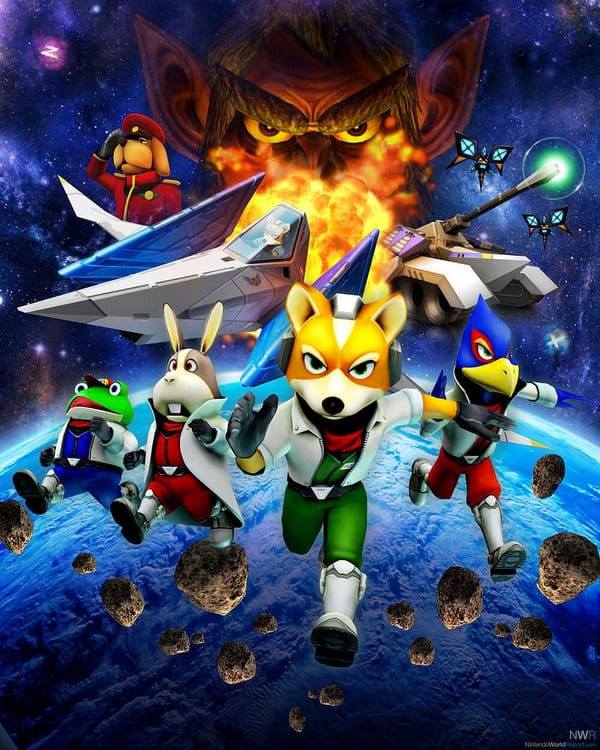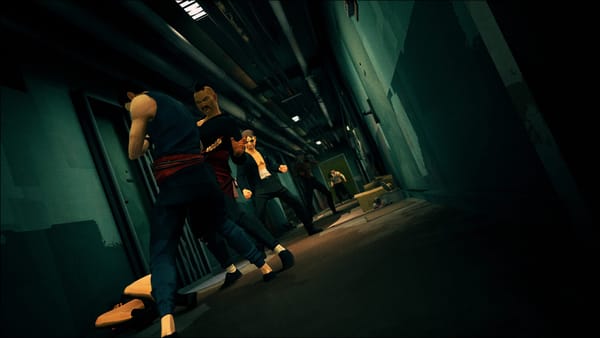Kirby and the Forgotten Land Review
Jumping into Nintendo's newest bout for the pink guy
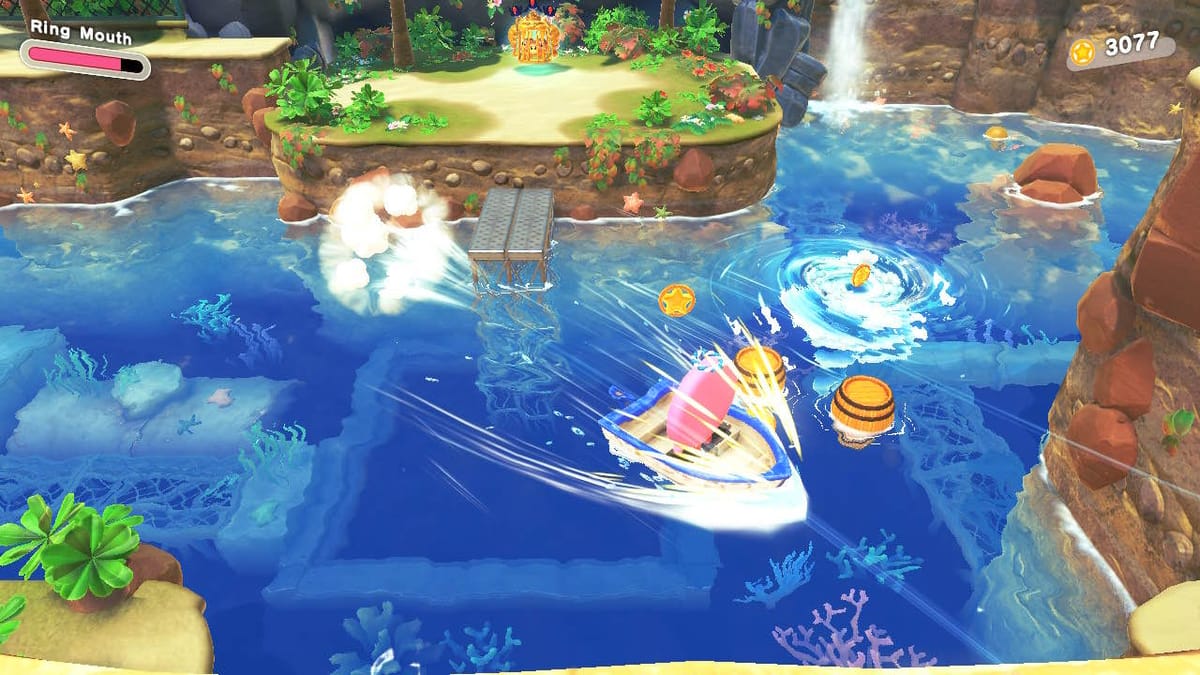
Normally, in place of a review, I would have a Tackling the Backlog article going into detail about everything I played during the past season. That said, I barely played anything this summer. Thanks to having a full-time job, my summer was a lot busier than normal, so by the time the leaves started changing colors I had only finished two games: my replay of Fort Solis, and Kirby and the Forgotten Land.
Kirby and the Forgotten Land would be the first Kirby game that I would see from start to finish. My knowledge of these games is pretty bare bones: Kirby can eat anything, and gains Copy Abilities from most things, he fights Meta Knight and King Dedede fairly often, the bosses are comically strong with the power to rip the universe in half, and the games themselves aren't too hard. I've dabbled a bit with Kirby's Adventure, and a little bit of Nightmare in Dreamland. For a while, I was convinced that Kirby Star Allies was the definitive 'date night game' given the ability to combine powers and the little smooches that the characters give each other to regain HP. After letting it sit on my shelf for a good few months, I finally decided to dust off Forgotten Land and see what I was missing.
Before we get going, here's the obligatory plug! If you'd like to further contribute to my efforts as an independent writer, I've set up various low-cost tiers to subscribe to this magazine. You can get neat things like shoutouts in future articles, and for the $10 tier you can pick what game I play for the site next!
Having barely experienced a Kirby game before, I collected my thoughts about what my first real adventure with the pink puffball would be. I figured it'd be fairly short. After the tutorial and opening cutscene showing Kirby getting absorbed into the Forgotten Land through a black hole, the game shows five distinct areas to progress through. Little did I know that this would only be the first chunk of the game.
For a short period, this game took over my life. I played on car rides, in waiting rooms, even while avoiding cousins at the family reunion. I beat the final boss while I was waiting on repairs for my car! For reference, HowLongToBeat says that being the main game and doing some extra stuff would take around 16 hours, and completing the game would take 26. In my time getting a 98% completed file, I spent 35 hours playing Kirby and the Forgotten Land.
Kirby and the Forgotten Land isn’t a far deviation from expectations based on looks alone. It’s an easy game to grasp, accompanied by cute, colorful aesthetics that bring vibrancy to all of its settings, from grass-enveloped cities to castles atop frozen hills. It uniquely combines the cartoonish biomes found commonly in video games with an urban locale that’s mostly been swallowed up by wild landscapes. While this aesthetic is explained pretty clearly in the beginning (a black hole sucking Dreamland into it and scattering everything across the Forgotten Land), the twist at the end serves to unravel a much larger plot that brings this unification of worlds into a new light. In addition to the first five worlds, two more sections open up as the story progresses to further highlight the effects of uniting Dreamland and the Forgotten Land.
It’s an easy game to grasp, accompanied by cute, colorful aesthetics that bring vibrancy to all of its settings, from grass-enveloped cities to castles atop frozen hills.

Mastery of the game’s combat is by no means a difficult task, but that doesn’t mean things don’t ramp up as players progress. Hidden collectibles add an extra layer of thought behind each stage and promote looking for patterns or abstract holes in the wall. The new Mouthful Mode sees Kirby interacting up close and personal with his new environment. Kirby inhales traffic cones, rings, and even cars to traverse the urban hills and valleys of the Forgotten Land. Copy Abilities come in a wide variety of shapes and sizes, each with their own upgrades that change the effects of the abilities, but still accessible enough to go back and replay levels using just one ability or none at all.
Coupled with the copy abilities are some small mechanics that add a bit more depth to the experience. The perfect dodge and sliding attack allow for unique follow-up attacks, and each elemental ability interacts with enemies and the environment in different ways like freezing enemies or picking up objects to throw and deal more damage. Kirby and the Forgotten Land knows that it's an easy game to handle, even on ‘Wild Mode,’ this game’s harder difficulty.
Each boss fight is pleasantly creative with their design. King Dedede makes a handful of appearances, each one having a similar formula but with an added difference to make them stand out. It's easy to figure out which Copy Ability does the most damage, but it never stops being fun trying out different things to see how the game handles giving players so many options. Without spoiling too much, the postgame and True Ending of the game are some of the most fulfilling content offered on a first playthrough. This is also the only way to get the final Colosseum, so there’s even more incentive to go through this incredibly fulfilling experience with a twist that flips the Forgotten Land on its back.

In my initial assertion, I wanted the game to be harder. I craved more of a challenge for the pink puffball, and for the first time since Ghost of Tsushima, I was open to playing New Game + and going through the game all over again. Yes, there’s postgame content to unlock the “True Ending,” but that’s hardly going through it all over again with new, stronger powers against tougher enemies! That said, I revisited the game while writing this review as a light refresher, and I thought more about the way this game presents its challenges. After finishing certain story beats, different levels of the Colosseum unlock and offer boss rushes featuring the key players of the section that had just been completed. In every fight besides the final one, a timer rests comfortably at the top of the screen, and at the end of the run players can see their total time and any stat boosts they may have used during the run. Combining these experiences with the Treasure Roads, short speed runs that focus on a specific Copy Ability or Mouthful Mode, I accepted the fact that Kirby and the Forgotten Land is more focused on tackling bigger threats with haste rather than just power.
Without spoiling too much, the postgame and True Ending are some of the most fulfilling content the game has to offer on a first playthrough. This is also the only way to get the final Colosseum as well, so there’s even more incentive to go through this incredibly fulfilling experience with a twist that flips the Forgotten Land on its back.


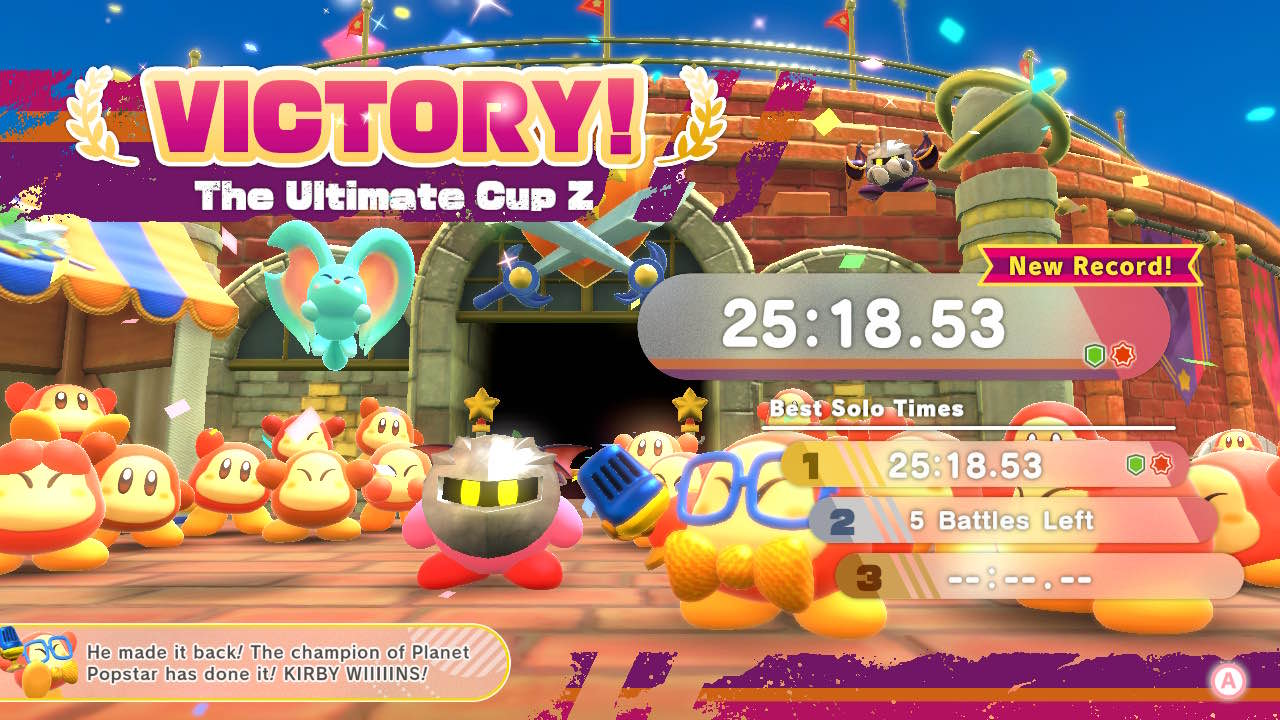

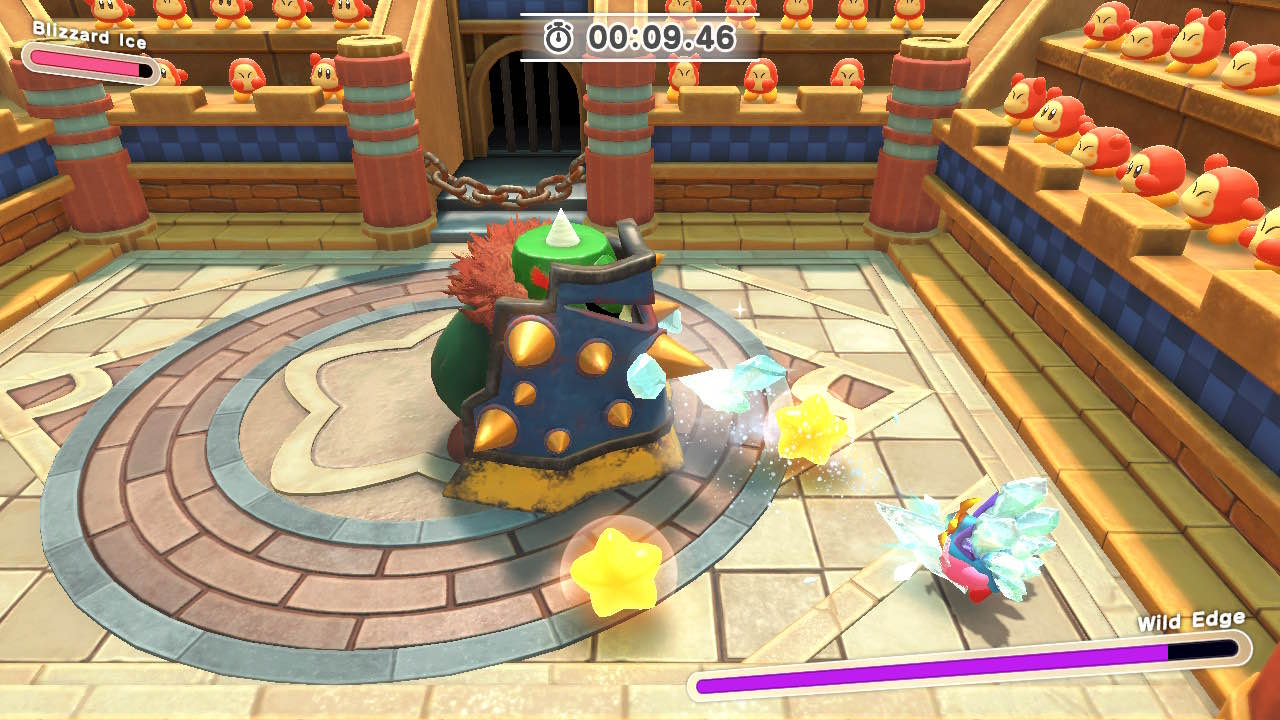
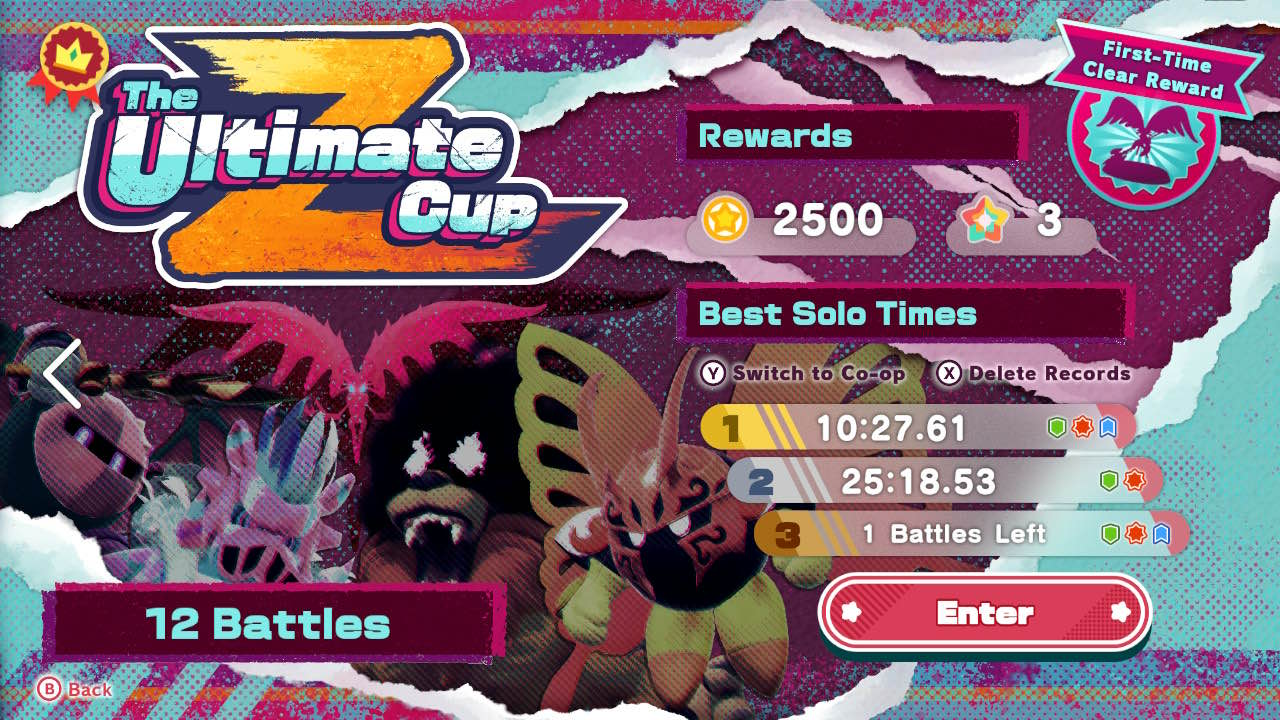
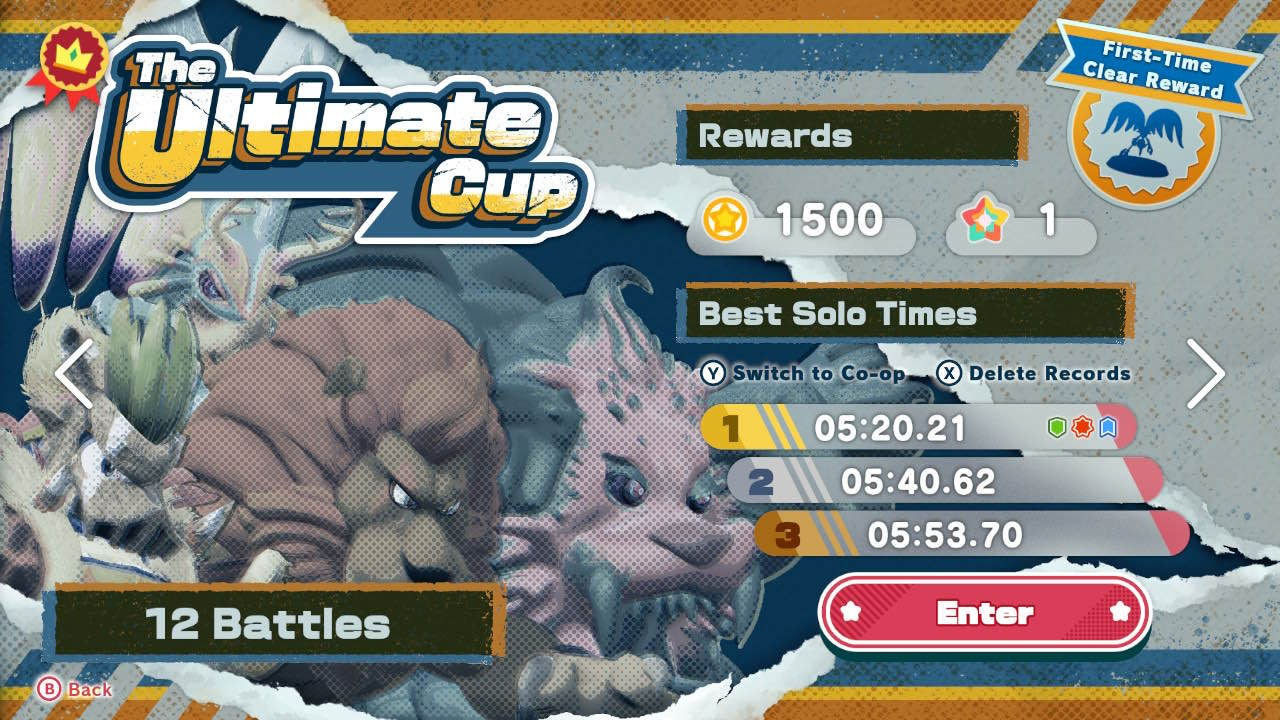
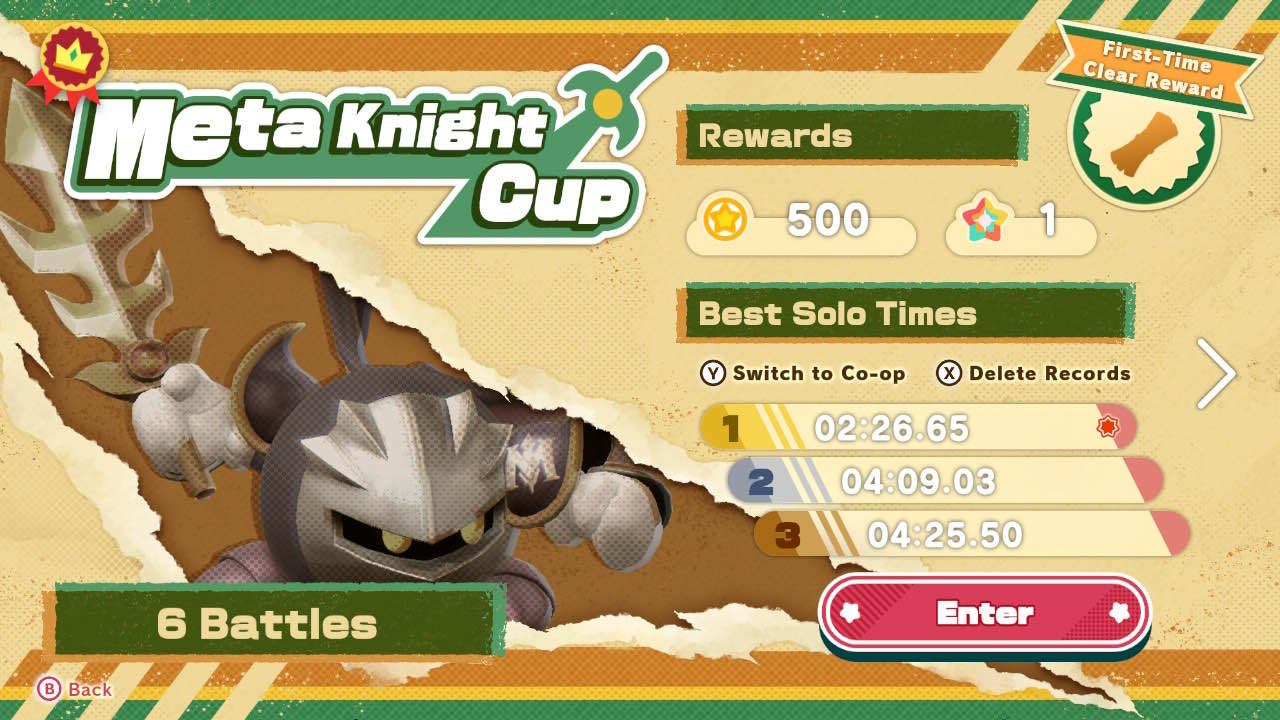
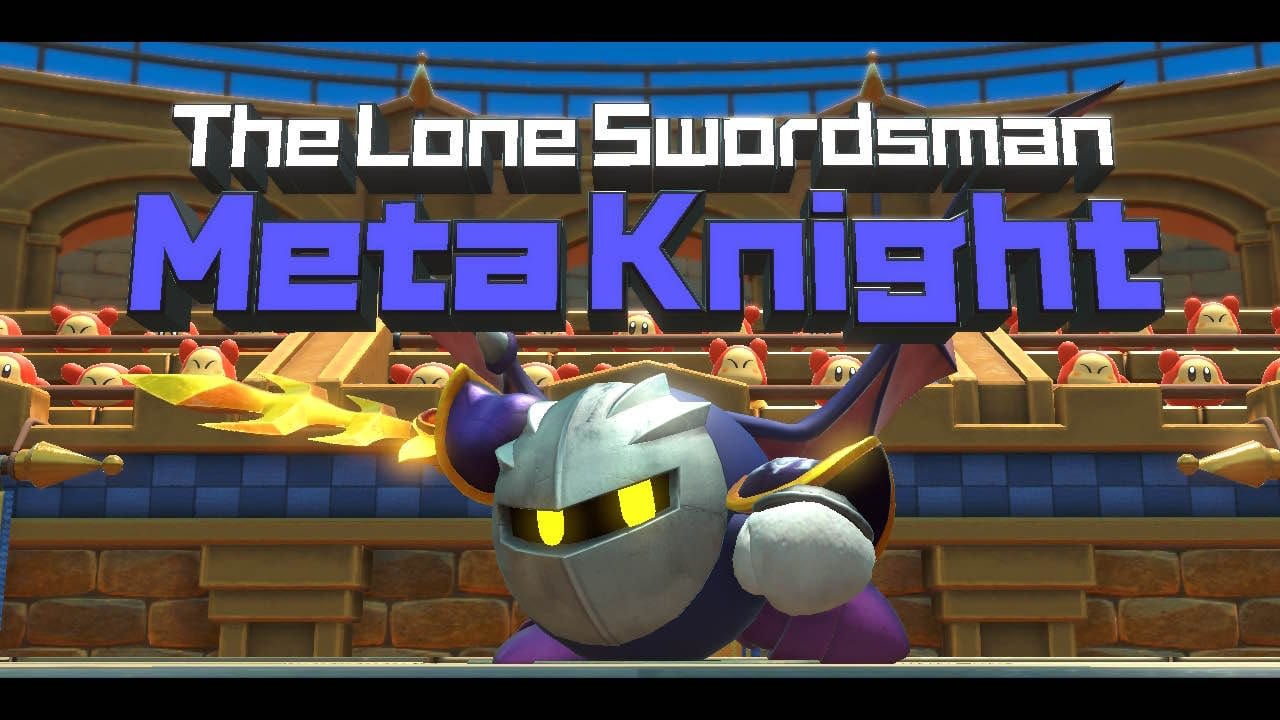
In a broader view, Kirby and the Forgotten Land is immensely satisfying. Each world has a set of five stages where the main goal is to save the Waddle Dees that got sucked up by the black hole. They work like the stars usually do in a Mario game - collecting a certain number of them throughout the stage unlocks the boss level. Waddle Dees also serve the purpose of inhabiting the hub world Kirby departs from before each bout, and saving all of them nets some small rewards here and there. Each stage hides seven or so Treasure Roads that utilize different power-ups and reward the player with Rare Stones to upgrade Copy Abilities. It creates a nice feedback loop.
My favorite stage comes in the middle of the game after most of the Mouthful Modes have been discovered and used. Kirby adventures through an abandoned mall and has to use the different modes to fit into shapes in the wall. What I loved about this stage was that it was the first time we got diegetic music in-game. Everywhere else is accompanied by an astounding symphony to guide the players on their adventure as they pilot Kirby, but this time the music is just playing in the mall for Kirby themselves to hear. On top of this, it’s a solid blend of gameplay elements, and light puzzle solving that utilizes the different features of the Mouthful Mode objects for short sections.
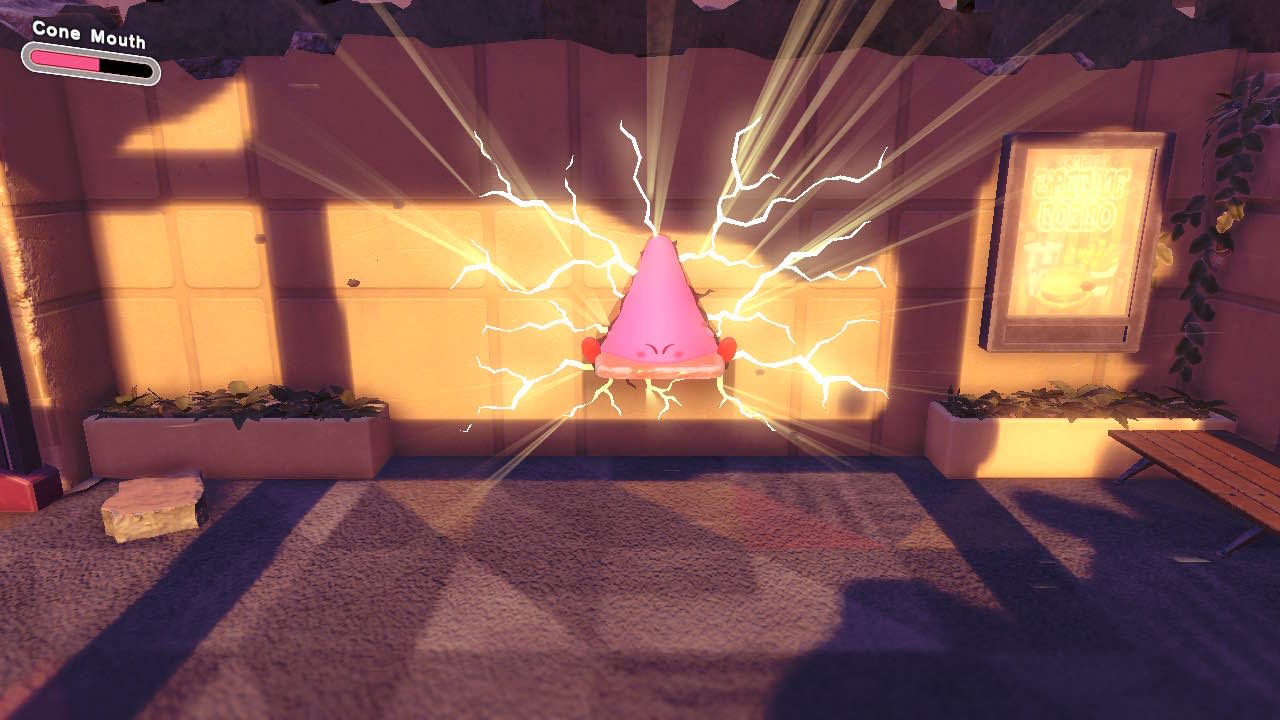

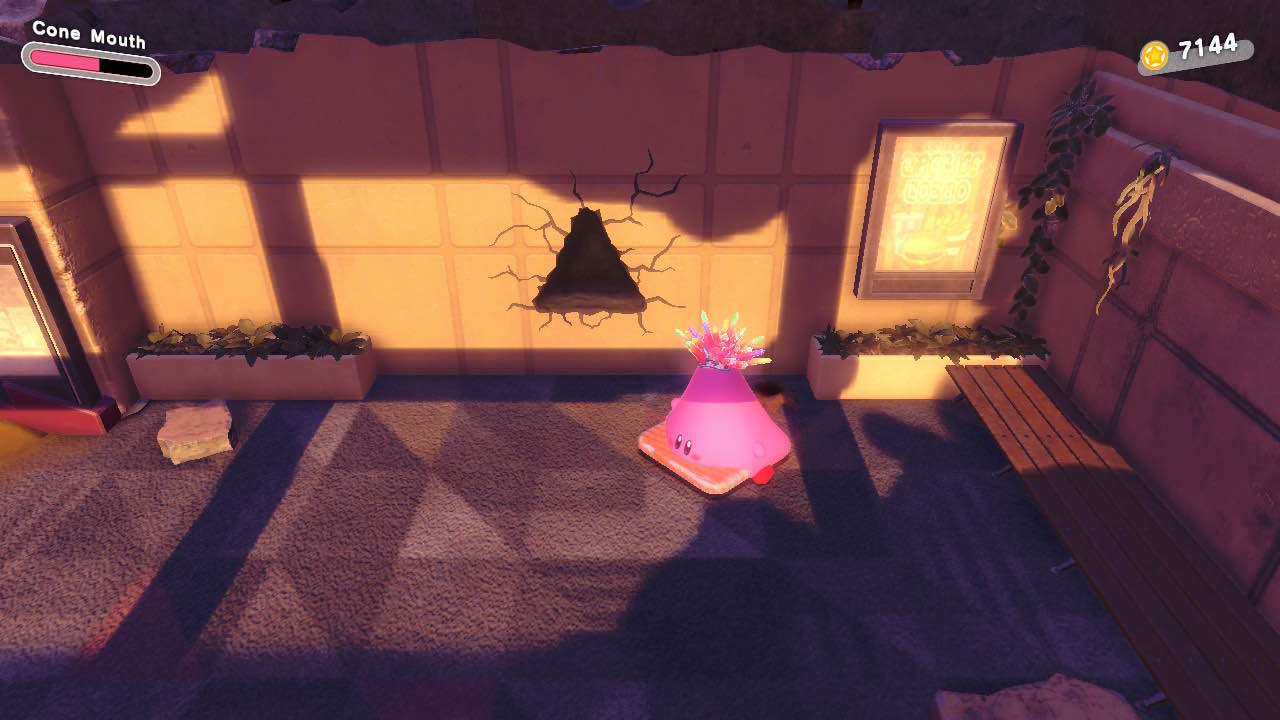
By no means is Kirby and the Forgotten Land a thoughtless experience. It can be linear at times - the level design is straightforward without looking for the easter eggs and collectibles, but it’s those extras that are the cherry on top for each stage. Replayability is abundant with short levels that are easy to navigate, and there are bonus levels interspersed that work as short tutorials for new copy abilities and the new Mouthful Mode. Unlocking the True Ending is something that I recommend everyone does, and I would gladly place Kirby and the Forgotten Land in the category of Nintendo Switch must-haves.
Bonus page!
For this month's shoutout, let's all give Artemis Octavio a big hand for being the site's first patron!
Artemis is a talented writer with a broad mastery over the written word. Her writing boasts an immense understanding of games on a deeper, more intimate level, like how she describes Mullet Mad Jack as "[marrying] sci-fi aesthetics with the current cultural zenith of follower-obsessed social media influencers, predicting a satirical future in which the lines of humanity are interspersed with the internet." Her own blog, ...Or How I Learned to Stop Caring, utilizes those same strengths that show up in her work on SUPERJUMP, but with a more casual and one-on-one vibe to it. The theme of ...Or How I Learned to Stop Caring is about how games evoke cultural conversations, seeing them as unique artistic experiences for those that spend their time with them. Her articles serve as a reminder that how we experience games as individuals will always differ from person to person, and that our perspectives are important to hold onto, especially in an era where opinions are flung around willy nilly on social media (which is ironic to say considering this is a review article, haha).
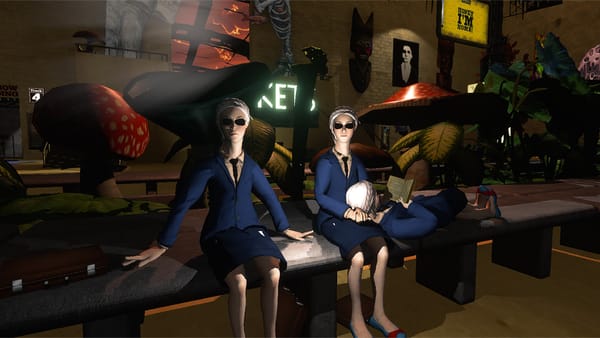
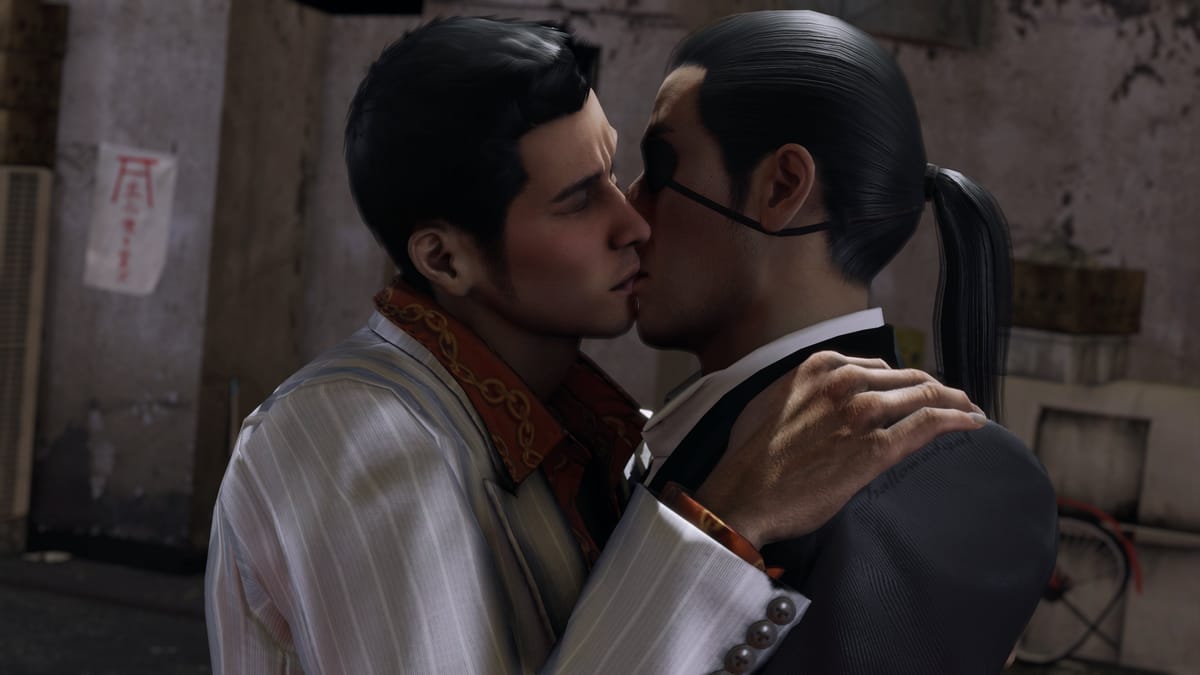
Some closing remarks:
- The List is almost completely updated! This is my complete catalog of games, organized down to how long they'll take to beat, how I own them, any articles I've written about them, and so on. The only mystery is whether or not I've played something - I don't want that to deter from any potential recommendations, and it lets me sort of trick myself into being able to reexperience some of these games. I only have two sections to take inventory of, but I'm going to do another count before I announce anything as complete for now.
- For December I have two articles planned. One is a more traditional Game Awards style essay where I reflect on the past year and the games that influenced me. The other is something that I've been sitting on for a while now and the research for it is going to take some time.
Happy reading! I'll see you all next month.


